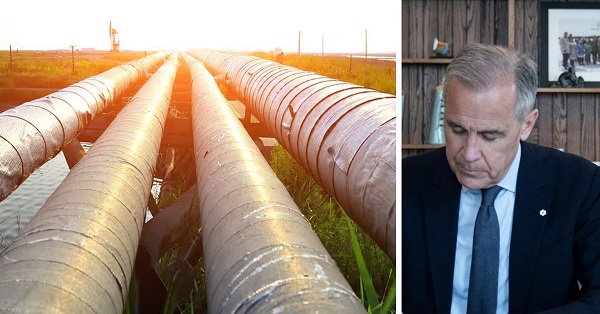Agriculture
Restoring balance between renewable energy, agricultural land and Alberta’s iconic viewscapes

Alberta is known around the world for many things – some of the most breathtaking and iconic scenery on earth, a world-class agricultural industry that puts high-quality food on tables across the globe and a rich history of responsible energy development. Alberta is a destination of choice for millions of visitors, newcomers and investors each year.
To ensure Alberta’s continued prosperity, it is imperative that future energy development is balanced with environmental stewardship, protecting Albertans’ ability to use and enjoy their property, and safeguarding agriculture for continued food security.
Alberta’s renewable energy sector has grown rapidly over the past decade, yet the rules to ensure responsible development have not kept up. As a result, municipalities, agricultural producers and landowners across the province raised concerns. Alberta’s government is fulfilling its duty to put Albertans first and restore the balance needed for long-term success by setting a clear path forward for responsible renewable energy development.
“We are doing the hard work necessary to ensure future generations can continue to enjoy the same Alberta that we know and love. By conserving our environment, agricultural lands and beautiful viewscapes, our government is protecting and balancing Alberta’s long-term economic prosperity. Our government will not apologize for putting Albertans ahead of corporate interests.”
Amendments to the Activities Designation Regulation and Conservation and Reclamation Regulation provide clarity for renewable energy developers on new and existing environmental protections.
These changes will create consistent reclamation requirements across all forms of renewable energy operations, including a mandatory reclamation security requirement. Albertans expect renewable power generation projects to be responsibly decommissioned and reclaimed for future generations. Alberta’s government stands firm in its commitment to protect landowners and taxpayers from being burdened with reclamation costs.
“We want to protect landowners, municipalities and taxpayers from unfairly having to cover the costs of renewable energy reclamations in the future. These changes will help make sure that all renewable energy projects provide reasonable security up front and that land will be reclaimed for future generations.”
Alberta’s government committed to an ‘agriculture first’ approach for future development, safeguarding the province’s native grasslands, irrigable and productive lands. The protection of agricultural land is not only essential to food production, but to environmental stewardship and local wildlife protection.
The Electric Energy Land Use and Visual Assessment Regulation follows this ‘agriculture first’ approach and enhances protections for municipalities’ most productive lands, establishing the need to consider potential irrigability and whether projects can co-exist with agricultural operations. These changes are critical to minimizing the impacts of energy development on agricultural lands, protecting local ecosystems and global food security. With these new rules, Alberta’s farmers and ranchers can continue to produce the high-quality products that they are renowned for.
“Our province accounts for nearly 50 per cent of Canada’s cattle, produces the most potatoes in the country, and is the sugar beet capital of Canada. None of this would be possible without the valuable, productive farmland that these new rules protect. Understanding the need for an ‘agriculture first’ approach for energy development is as simple as no farms, no food.”
The new Electric Energy Land Use and Visual Assessment Regulation also establishes specific guidelines to prevent projects from impacting pristine viewscapes. By establishing buffer zones and visual impact assessment zones, Alberta’s government is ensuring that industrial power projects the size of the Calgary Tower cannot be built in front of UNESCO World Heritage sites and other specified viewscapes, which will support the continued growth and success of Alberta’s tourism sector.
As Alberta’s population and economy grows, it is critical that the province has the additional power generation needed to meet increasing demand. Power generation must be developed in a balanced and responsible manner that promotes environmental stewardship, ensures the continued enjoyment of Alberta’s beautiful landscapes, and safeguards food security by protecting Alberta’s valuable agricultural lands. By encouraging the responsible development of additional power generation with these new regulations, Alberta’s government is listening to Albertans and ensuring the electricity grid is affordable, reliable and sustainable for generations to come.
Summary of Policy Changes
Following the policy direction established on February 28, 2024, Alberta’s government is now implementing the following policy and regulatory changes for renewable power development:
Agricultural lands
The new Electric Energy Land Use and Visual Assessment Regulation takes an “agriculture first” approach.
• Renewable energy developments will no longer be permitted on Land Suitability Rating System (LSRS) Class 1 and 2 lands unless the proponent can demonstrate the ability for both crops and/or livestock to coexist with the renewable generation project,
• In municipalities without Class 1 or 2 lands, Class 3 lands will be treated as Class 1 and 2.
• An irrigability assessment must be conducted by proponents and considered by the AUC.
Reclamation security
Amendments to the Activities Designation Regulation and Conservation and Reclamation Regulation create consistent reclamation requirements across all forms of renewable energy operations, including a mandatory reclamation security requirement. There will be a mandatory security requirement for projects located on private lands.
• Developers will be responsible for reclamation costs via a mandatory security or bond.
• The reclamation security will either be provided directly to the province or may be negotiated with landowners if sufficient evidence is provided to the AUC.
Viewscapes
The Electric Energy Land Use and Visual Assessment Regulation ensures pristine viewscapes are conserved through the establishment of buffer zones and visual impact assessment zones as designated by the province.
• New wind projects will no longer be permitted within specified buffer zones.
o Other proposed electricity developments located within the buffer zones will be required to submit a
visual impact assessment before approval.
• All proposed electricity developments located within visual impact assessment zones will be required to submit a visual impact assessment before approval.
Municipalities
The AUC is implementing rule changes to:
• Automatically grant municipalities the right to participate in AUC hearings.
• Enable municipalities to be eligible to request cost recovery for participation and review.
• Allow municipalities to review rules related to municipal submission requirements while clarifying consultation requirements.
Agriculture
USDA reverses course under Trump, scraps Biden-era “socially disadvantaged” farm rules

Quick Hit:
The Trump administration’s USDA is pulling back from defending Biden-era farm aid programs that gave preferential treatment based on race and gender. The move aligns with President Trump’s directive to dismantle remaining diversity, equity, and inclusion initiatives across federal agencies.
Key Details:
- The Wisconsin Institute for Law and Liberty (WILL) sued on behalf of dairy farmer Adam Faust, challenging USDA aid programs that favor minorities and women.
- Programs under scrutiny include loan guarantees, dairy coverage, and conservation incentives, all of which disadvantaged white male farmers.
- USDA issued a final rule eliminating “socially disadvantaged” designations, stating programs must uphold meritocracy, fairness, and equal opportunity.
Diving Deeper:
The U.S. Department of Agriculture under the Trump administration is abandoning its defense of farm aid programs created during the Biden years that granted benefits based on race and gender. In a recent court filing, the USDA declined to defend several programs that civil rights watchdogs argue discriminated against white male farmers.
The litigation was brought forward by the Wisconsin Institute for Law and Liberty (WILL) on behalf of Adam Faust, a Wisconsin dairy farmer. Faust contends that the Biden-era rules violated equal protection principles by privileging minorities and women over others in loan guarantees, dairy margin coverage, and conservation cost-share programs.
Under the loan guarantee program, minority and female farmers could secure up to 95% federal backing on loans, while white male farmers were limited to 90%. This disparity directly affected borrowing power and interest rates. Similarly, the Dairy Margin Coverage Program charged white male farmers a $100 annual fee, while exempting “socially disadvantaged” farmers. In conservation projects, minority and female participants received up to 90% reimbursement for costs, while others received only 75%.
On July 10, the USDA issued a final rule to strike the “socially disadvantaged” designation from its regulations, calling it inconsistent with constitutional principles and with President Trump’s policy objectives. “Moving forward,” the USDA rule stated, “USDA will no longer apply race- or sex-based criteria in its decision-making processes, ensuring that its programs are administered in a manner that upholds the principles of meritocracy, fairness, and equal opportunity for all participants.”
The department noted that while the loan guarantee program will be amended immediately, officials are still reviewing how to apply the new policy to the dairy and conservation programs. The USDA also signaled that its decision “could obviate the need for further litigation,” though WILL has indicated its legal fight will continue.
“This lawsuit served as a much-needed reminder to the USDA that President Trump has ordered the end to all federal DEI programs,” said Dan Lennington, deputy legal counsel at WILL. “There’s more work to be done, but today’s victory gives us a clear path to do even more in the name of equality.”
Agriculture
Canola or cars? Canada can’t save both

This article supplied by Troy Media.
 By Doug Firby
By Doug Firby
Canada is risking its most successful export to prop up an EV pipe dream
Picture a Canadian industry that contributes $43 billion to the economy and employs about 200,000 people.
There aren’t many of those in this country. Any industry of that size should be considered indispensable.
And yet, while there is (understandable) national hand-wringing over the future of Canada’s auto industry—especially in light of U.S. President Donald
Trump’s renewed tariff rampage—another industry, arguably more economically important, is being dangerously overlooked.
That industry is canola.
A summer drive through Manitoba, Saskatchewan or Alberta makes the scale hard to miss. Yellow fields stretch to every horizon. Canola production has exploded over the past decade and has become the very lifeblood of the Prairies.
Without it, large parts of those provinces would be economically barren and far more sparsely populated. We’re not talking about niche agriculture here—we’re talking about a foundational industry that keeps the lights on across three provinces.
Canada is the world’s largest exporter of canola, a crop used to produce cooking oil, animal feed and biofuels. Its export-driven success makes it a cornerstone of the Prairie economy.
Now consider this: Canada’s auto manufacturing industry contributes about $19 billion annually to GDP and employs around 125,000 people directly in assembly and parts manufacturing. Include distribution and aftermarket services, and you get a bigger figure, but the core numbers still pale in comparison to canola.
So, here’s the uncomfortable question: If you had to sacrifice one, which would it be?
It’s a Hobson’s choice. Nobody wants to lose either. But Canada has been pushed into a position where something has to give.
The Trudeau government—and before that, the Biden administration—imposed 100 per cent tariffs on made-in-China electric vehicles (EVs). The logic was straightforward: protect the billions being pumped into Canada’s auto sector and turn the country into a hub for EV innovation and production.
It was a defensive move: one meant to slow China’s dominance in the global EV market and give domestic manufacturers room to grow. Without it, cheap, wellbuilt Chinese EVs would undercut Canadian and North American models before they ever left the factory floor.
But China doesn’t take these things lightly. In retaliation, it slapped a 76 per cent tariff on Canadian canola. Prairie farmers, many of whom are already grappling with rising costs and unpredictable weather, are now wondering if their main market is disappearing overnight.
China has long been Canada’s largest canola customer, though the relationship has had flare-ups, including temporary bans in past years tied to diplomatic disputes.
More than two-thirds of Canada’s exported canola goes to China. The latest tariff hike has already wiped out an estimated $1 billion in value. And there’s no clear end in sight.
Manitoba Premier Wab Kinew was blunt last week: Canada cannot afford to be in a trade war with both the United States and China. He suggested that, in the short term, Ottawa should direct EV tariff revenues to support canola producers. That may buy us some time. But the broader strategic question looms larger: With the U.S. under Trump becoming an increasingly unstable trade partner, and China punishing us for playing by American rules, where does Canada place its long-term bet?
It’s not an easy question to answer.
China is hardly an ideal partner. Its human rights record is abysmal, and its growing economic power often comes with strings attached. But we also can’t deny that it has already become the global manufacturing centre in many key sectors—including electric vehicles.
Then there’s the U.S. A longtime ally, yes, but under Trump, all bets are off. In January, he said of Canada, “We don’t need anything they have.” Not cars. Not oil. Not even niceties.
CUSMA—the Canada–United States–Mexico Agreement that replaced NAFTA—governs most of Canada’s trade with our two largest partners. If Trump reopens the deal—and with Trump, it’s usually safest to take him literally—the Canadian auto industry may not survive. Billions in subsidies and protective tariffs won’t matter if the largest market slams its door shut.
So, again: what should we protect?
New markets for canola are being pursued—in Europe, Japan and elsewhere. But they won’t match China’s scale anytime soon. Diversifying export markets takes years. Prairie farmers don’t have that kind of time.
Meanwhile, dreams of building a Canadian-made EV remain just that: dreams. The auto sector may eventually pivot and survive, but right now, it’s the one on life support. Canola is the industry that’s vibrant—unless we let it get crushed in a trade crossfire.
I lived in an auto town for over two decades. I know the stakes. I’ve seen what happens when plants close, when supply chains dry up, and when livelihoods vanish.
But we need to be realistic.
Canola is a winning industry. It feeds the economy, supports thousands of families and helps keep our rural communities alive. It doesn’t need endless
subsidies or federal cheerleading—it just needs stable access to markets.
That might mean giving ground on EV tariffs. That might mean swallowing some pride on the international stage. But Canada cannot afford to sacrifice a thriving sector to save one already on the brink.
If we’re going to make hard choices—and we will—let’s make the one that protects what still works.
Canada cannot lose canola.
Doug Firby is an award-winning editorial writer with over four decades of experience working for newspapers, magazines and online publications in Ontario and western Canada. Previously, he served as Editorial Page Editor at the Calgary Herald.
Troy Media empowers Canadian community news outlets by providing independent, insightful analysis and commentary. Our mission is to support local media in helping Canadians stay informed and engaged by delivering reliable content that strengthens community connections and deepens understanding across the country
-

 Business1 day ago
Business1 day agoBigger Government, Bigger Bill: PBO reveals $71.1 billion in federal personnel spending in 2024–25
-

 Alberta1 day ago
Alberta1 day agoAlberta’s fiscal update—and $6.5 billion deficit—underscores need for spending reductions
-

 Alberta1 day ago
Alberta1 day agoNatural gas connection to breathe new life into former Alberta ghost town
-

 Business1 day ago
Business1 day agoCanadians can’t afford another Ottawa budget failure
-

 COVID-192 days ago
COVID-192 days agoRFK Jr. revokes emergency use authorization for COVID shots
-

 Crime2 days ago
Crime2 days agoPolice Say Victim Drugged, Kidnapped From Alberta in B.C. Human Trafficking and Cocaine Dealing Network
-

 Business2 days ago
Business2 days agoPresident Trump Ending ‘Catastrophic’ Loophole Blamed For Funneling Drugs, Harming US Workers
-

 Energy1 day ago
Energy1 day agoGuess there’s a “business case” after all. Europe wants LNG, but can Canada still provide it?






